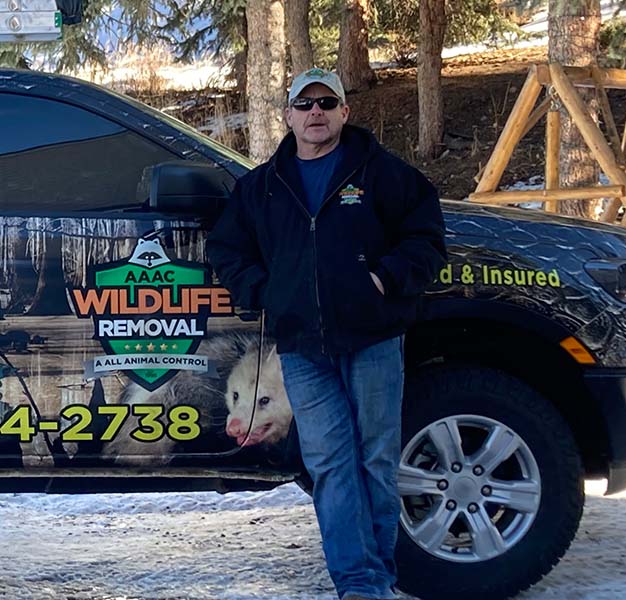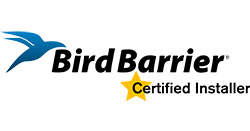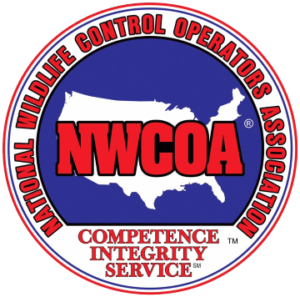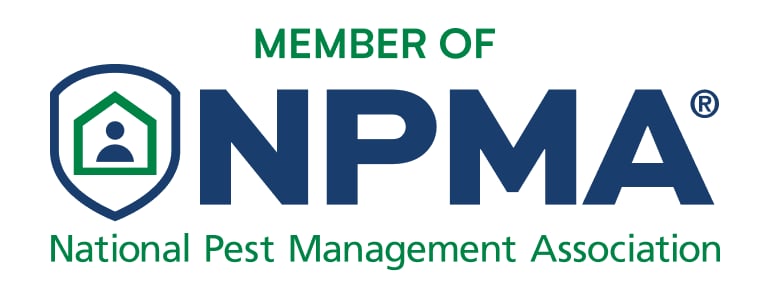How we restore your attic
Pests may not be able to chew through insulation, but they can certainly tear it up. The insulating material becomes more than just bedding: after all, the animals that are tearing at your attic’s barriers will also make a home for themselves in said holes and leave behind their own contaminants like urine and feces. And with less insulation integrity, these areas easily let air escape or enter – so you’re losing money left and right! These are the steps that we follow when restoring an attic.

Scoop out Larger Feces Clumps
The first step of an attic restoration is to remove large amounts of feces left behind by insects. We use a long-handled tool for removing the feces off the ceilings and walls. If the droppings are dry or stuck on hard surfaces we will soak them in water, and then use a wire brush for scraping them off.
AAAC uses a special tool with an extendable handle to climb on top of your house and reach the areas where squirrels or raccoons leave their droppings. It is possible that large quantities of droppings are needed to be removed from rafters and the eaves by the technicians.

Vacuum Small Feces
To decontaminate an attic, the next step is to vacuum small rodent feces from it. This is the only way to remove tiny pellets of feces found in attics from rats, mice and other rodents. AAAC uses a special machine, which has a long enough hose length to reach the most remote parts of your attic. It has an extra-long, powerful vacuum tube, high-speed suction, and HEPA filter that removes animal hair and droppings. To clean small droppings, AAAC Wildlife will also use a special brush attachment that is designed to reach tight spaces such as corners and accessible areas near the roofline.
AAAC uses a UV lamp to locate small feces found in attics. Any surface that has feces left behind by animals like bats, rats or raccoons will look like black spots when exposed to UV light.

Air Duct Cleaning & Repair
AAAC Wildlife Control offers duct repair and restoration services. This includes removing animal hair, droppings and urine from the ductwork. AAAC uses a special tool for cleaning the inside of the ducts. Once this is done, we can spray a disinfectant on the ducts to eliminate any remaining bacteria or viruses that may have been left behind by bats, rats, raccoons, or squirrels.

Decontaminate the Attic
After removing rodents, the most important aspect of any attic restoration project is to decontaminate the attic of rodent urine and feces. This is an essential part of the job. You want to make sure your family remains safe from possible microbial pathogens.
For this part of the attic restoration service, AAAC Wildlife Removal uses a special UV light to find areas contaminated with rodents and other animal droppings. The technicians will then spray a disinfectant spray on the affected surfaces to kill any microorganisms from the animal feces.
AAAC Wildlife Removal will spray a fine mist into the attic to kill microorganisms. They use an electric-atomizer sprayer, which creates a fog that’s invisible to humans. As the droplets evaporate, they produce a chemical residue that’s toxic to microorganisms such as algae, molds, bacteria, and viruses.
The attic restoration process also requires that the attic be dried. This is because moisture can encourage mold growth if it isn’t removed. AAAC may use an attic dehumidifier to eliminate any moisture remaining in insulation and wood. This helps to prevent mold growth in the attic space during re-insulation.

Full Attic Insulation Replacement
To complete the restoration service, our technicians will remove the old insulation and then put in a new one. To prevent damage to neighboring areas or leaving a mess, it is essential that the old insulation be removed carefully. Insulation is typically wrapped around joists and rafters. It’s important to not pull too hard, as you could damage the wood structures in your attic.
Mold spores and other hazardous substances can be found in the insulation and released into the air when removed. Our technicians are required to wear masks in order not to breathe in any dangerous particles or substances that could get into the ducts.
After the old insulation is removed, the technicians will put new insulation in place. The insulation must fit snugly around rafters or joists. There is a risk of leaving some insulation behind if you don’t cut it close enough. The technicians also use masking tape and a duct sealer to keep everything in place during installation.
What is full attic restoration?
Attic Restoration is a process that restores the function and appearance to an attic. Attic restoration can include insulation, cleaning up waste, and decontamination.
Attics typically lose their ability to insulate when they become dirty or dusty from accumulated dust, animal droppings, or ice accumulation. The loss of insulation can cause energy loss through your home than if it were intact. The decontamination process begins with using fans throughout interior areas that have been affected by moisture such as closets or bathrooms where there has been leakage from water carrying away dirt and dust.
How do you disinfect an attic?
Remove soiled insulation, decontaminate with a disinfectant and an ultraviolet sterilizer, and sanitize to kill the bacteria. It is important to disinfect all surfaces that come in contact with the contaminated material. This will prevent reinfection.
To ensure that the process is safe and efficient, insulation must be removed. For attic restoration, you will need to use a powerful suction device to remove any harmful materials, such as mold and bacteria, from surfaces like wood beams or rafters. A biocides washdown is performed after which any mold remains are removed. It also leaves behind an antimicrobial compound to prevent the growth of mold and mildew in the future. Lastly, light sterilization disinfects the area with ultraviolet lights similar to those used in hospitals.
Total attic restoration solutions
AAAC Wildlife Removal can provide attic cleaning services. We will clean the attic of any feces and remove any soiled insulation. AAAC Wildlife will soak any droppings on hard surfaces that have dried out or are stuck to the surface with water, and then use a wire brush for scraping them off. AAAC Pest Control technicians use a special tool with an extendable handle. This allows them to reach higher areas where squirrels or raccoons can often leave feces. Air Duct Repair is available for those who want to have their ducts clean and free from animal hair and droppings. Get your attic back by calling us today!













